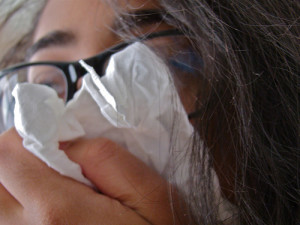The Symptoms Associated with Pneumonia
 The symptoms associated with pneumonia can vary from quite mild to severe. In fact, it’s not uncommon for a case of pneumonia to be initially diagnosed as a common cold. This is unfortunate, as the infection can often lead to hospitalization without the appropriate medical intervention early on.
The symptoms associated with pneumonia can vary from quite mild to severe. In fact, it’s not uncommon for a case of pneumonia to be initially diagnosed as a common cold. This is unfortunate, as the infection can often lead to hospitalization without the appropriate medical intervention early on.
(You might be interested to know that pneumonia is a condition of focus for many clinical trials being conducted around the country– peruse a full list of research opportunities here.)
Much of the variability that is seen in patients is due to the specific bacteria, virus or fungi that caused it.
Symptoms of Bacterial Pneumonia
When a healthy individual contracts pneumonia from bacteria, the symptoms will manifest rapidly. This infection often occurs because the patient’s immune system is already hampered by the flu or common cold. The following are all indicative of bacterial pneumonia:
- High-grade fever
- Cough that produces thick greenish or rust-colored mucus
- Rapid breathing
- Chills
- Severe levels of fatigue
- Diarrhea
- Nausea and vomiting
- Shortness of breath
- Sharp pain in the chest that is exacerbated by breathing or coughing
Nonbacterial Pneumonia Indications
The symptoms of viral pneumonia (or other nonbacterial infections) tend to take longer to manifest physically and are usually less severe than with bacterial pneumonia. Some people may not even be aware of their infection because they are asymptomatic. Symptoms that are associated with these infections include:
- Low-grade fever
- Coughing that produces some phlegm
- Sore throat
- Aching muscles
- Swollen lymph nodes in the neck
The term that is used frequently to describe this milder type of infection is “walking pneumonia”.
Tell-Tale Signs in Small Children and Older Adults
Clinical studies have shown that people over the age of 65 and younger than 2 are at greater risk of contracting pneumonia. For young children and newborns, their immune systems still have not fully developed, and older adults have immune systems that are hampered by age and possibly some underlying medical condition.
If an older individual has contracted pneumonia, they may not develop a fever or even a cough. Instead, the most common sign in older people is a sudden change in mental alertness (manifested as confusion or even delirium). If they have a separate respiratory illness, it may also get worse.
(The CDC suggests that senior citizens get vaccinated at least once a year, although it could add on to that recommendation soon.)
Pediatric cases of pneumonia can present a range of symptoms depending on the patient’s age:
- Newborns tend to become extremely lethargic, start making grunt-like noises, don’t feed properly, or develop a fever.
- Older children often mirror the symptoms seen in adult pneumonia patients, so doctors will zero in on tell-tale signs like rapid breathing (more than 60 breaths per minute) and coughing.
(Expecting parents should also consider checking out the BabyCenter for more advice on pneumonia.)
The following medical conditions share some symptoms that are quite similar to the ones we have listed above:
- Chronic obstructive pulmonary disease (COPD)
- Tuberculosis
- Bronchitis
We recommend reading our page on COPD symptoms if you’d like to get a better understanding of these conditions compare.